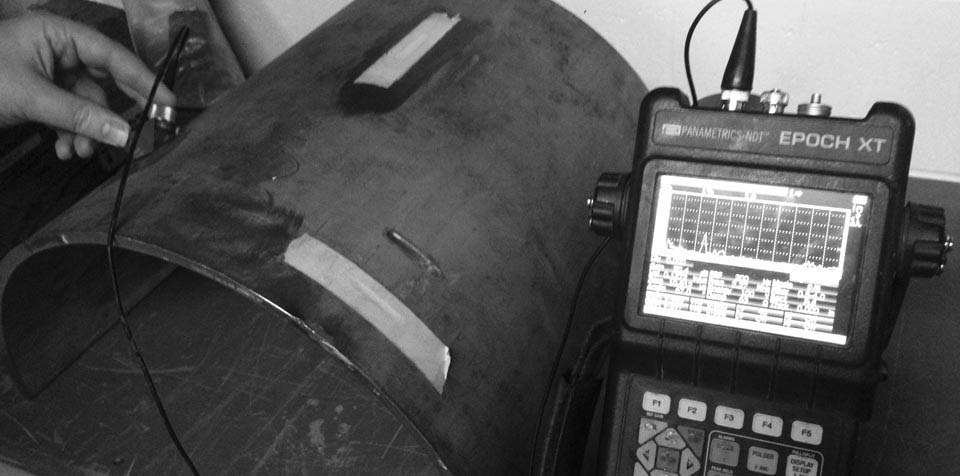Non-Destructive Testing Ultrasonic Testing
The ultrasonic testing (UT) method consists of sending high-frequency ultrasonic waves with a transducer. When the ultrasonic waves encounter a defect, an echo returns to the transducer. This reflected energy is converted into an electric signal and viewed by the system of the ultrasonic device. The ultrasonic inspection method provides very precise real-time information on the position and size of the defect detected.
Ultrasound testing also allows measurement of the wall thickness of most materials. Thus, it can measure losses of thickness by corrosion and erosion.
This inspection method applies to many materials:
• metallic materials
• thermoplastics
• composites and ceramics
Ultrasound testing is quick, reliable, safe and portable. Its use is not limited in any case by the shapes, dimensions or mass of the part to be inspected.
Typical applications:
• moulded parts (crack, piping, inclusion, porosity, segregation, etc.)
• forged parts (crack, fissure, piping, lapping, etc.)
• laminated, drawn and extruded products (lamination, segregation, inclusion, lapping, crack, etc.)
• heat treated parts (crack)
• welded parts (fissure, lack of fusion, lack of penetration, porosity, inclusion, etc.)
• parts in service (fatigue crack)
• measurement of thickness, corrosion and erosion

